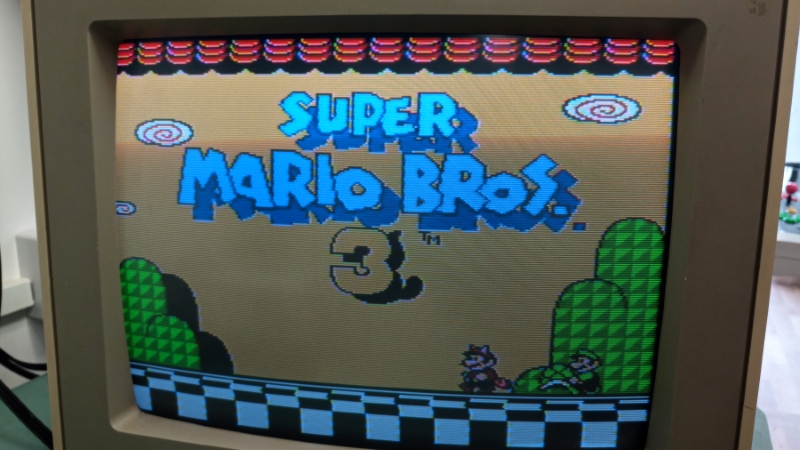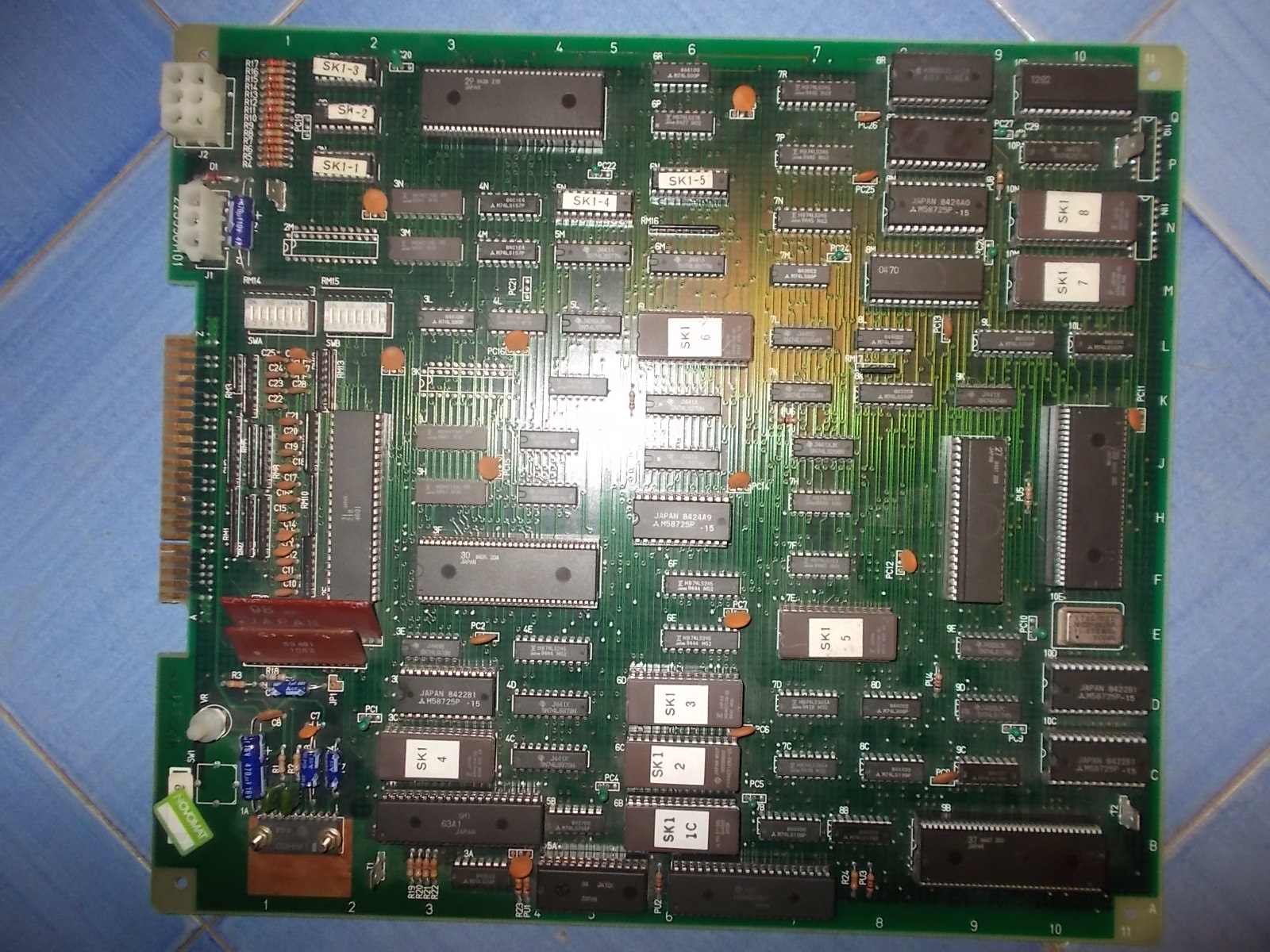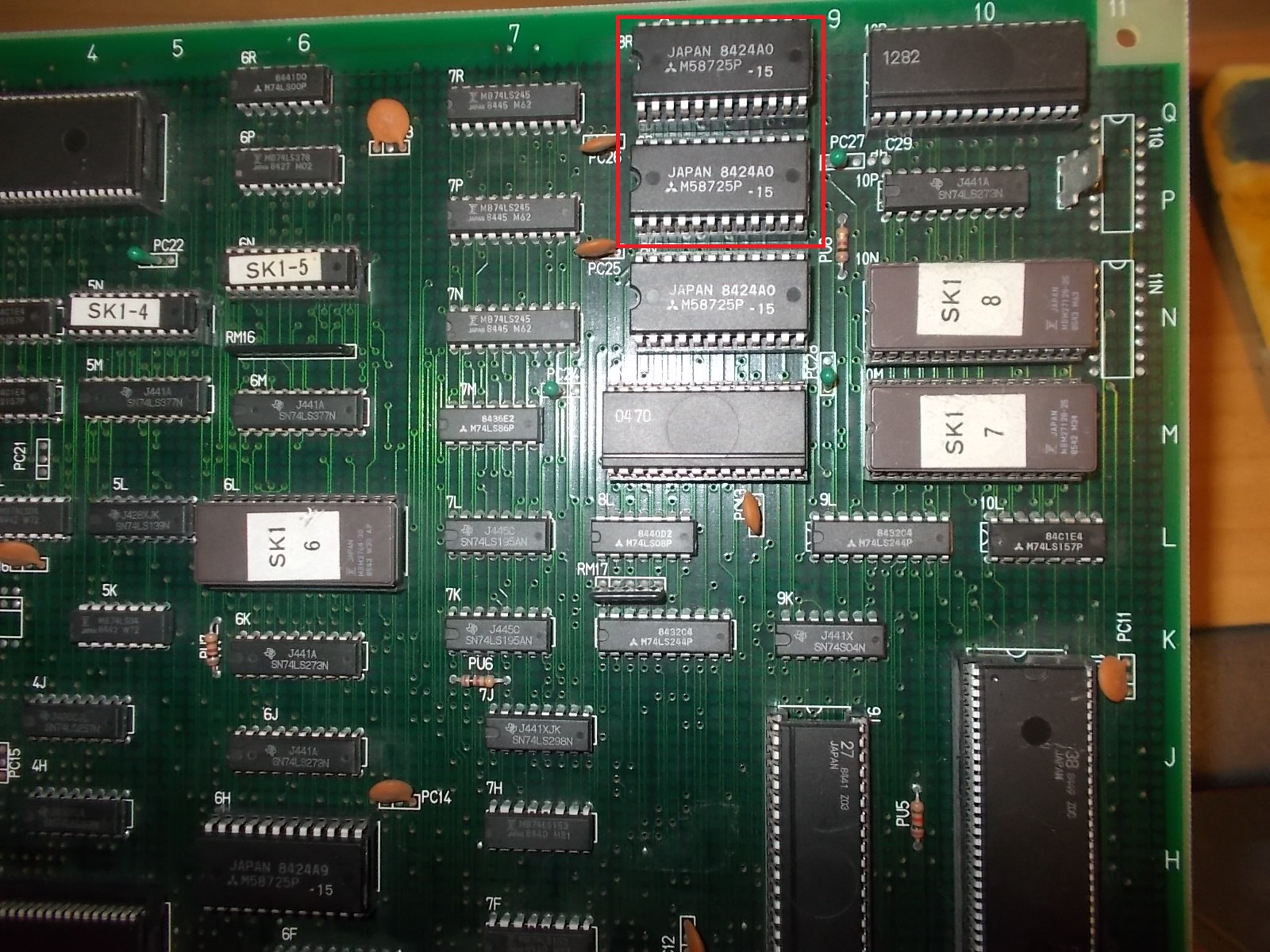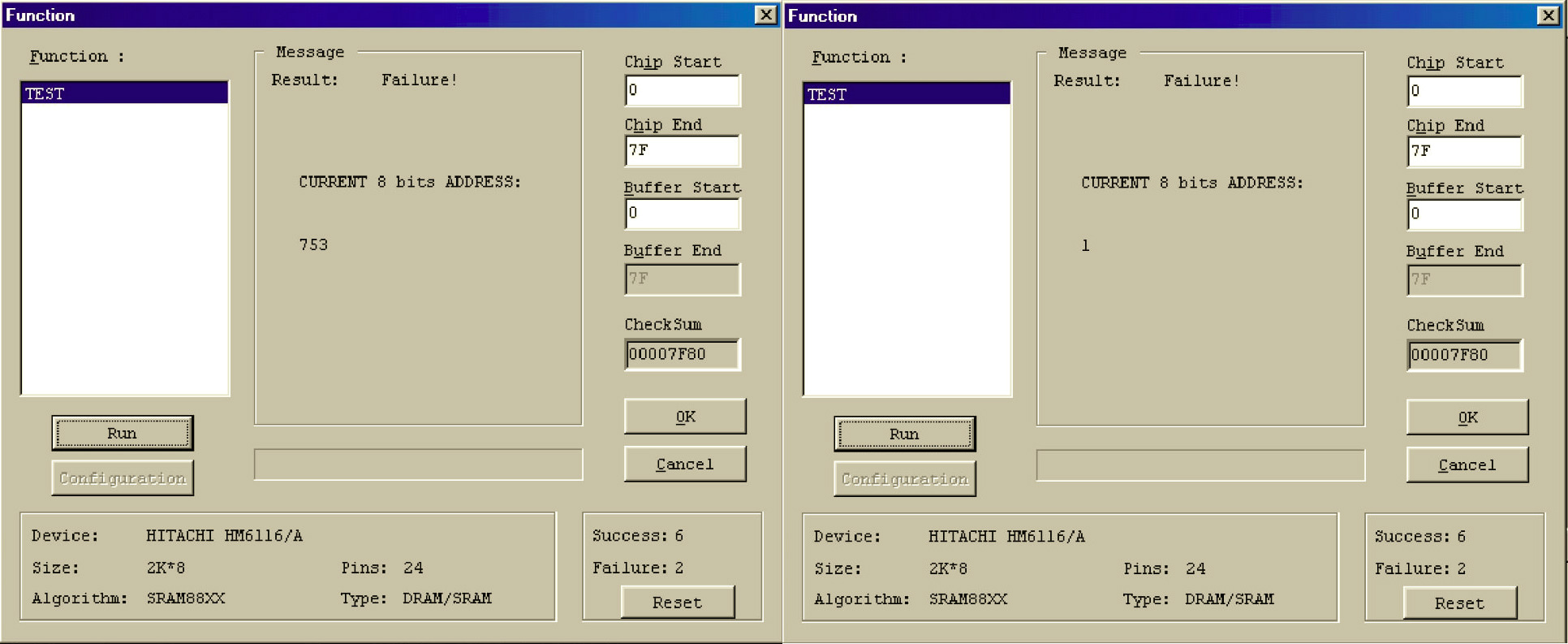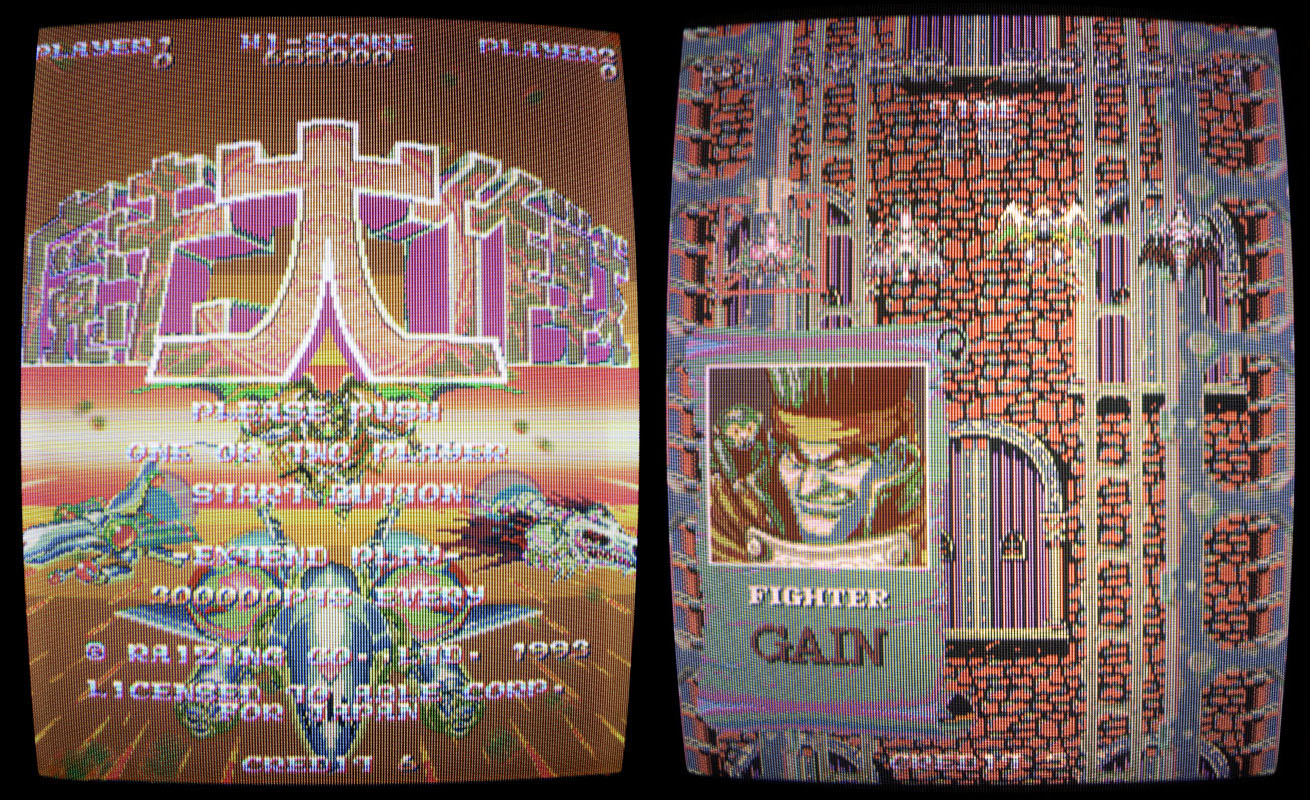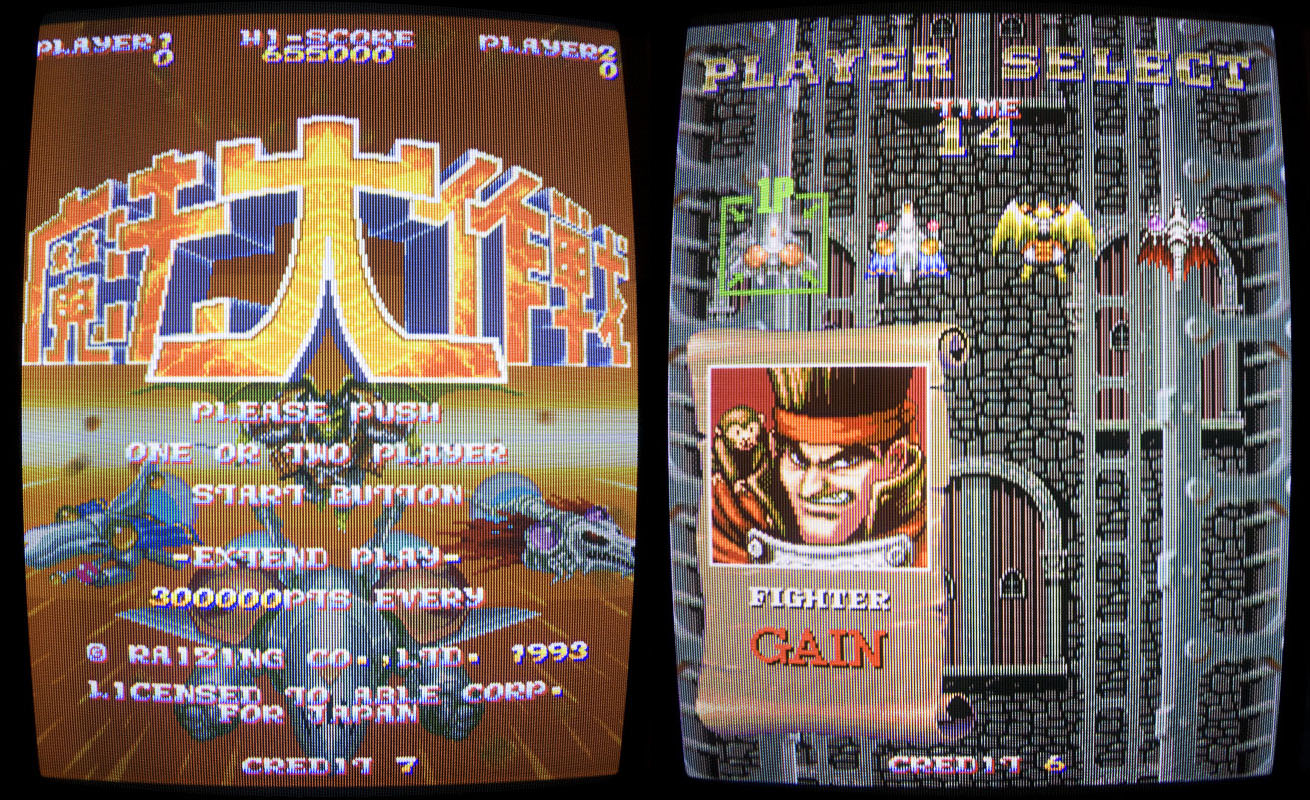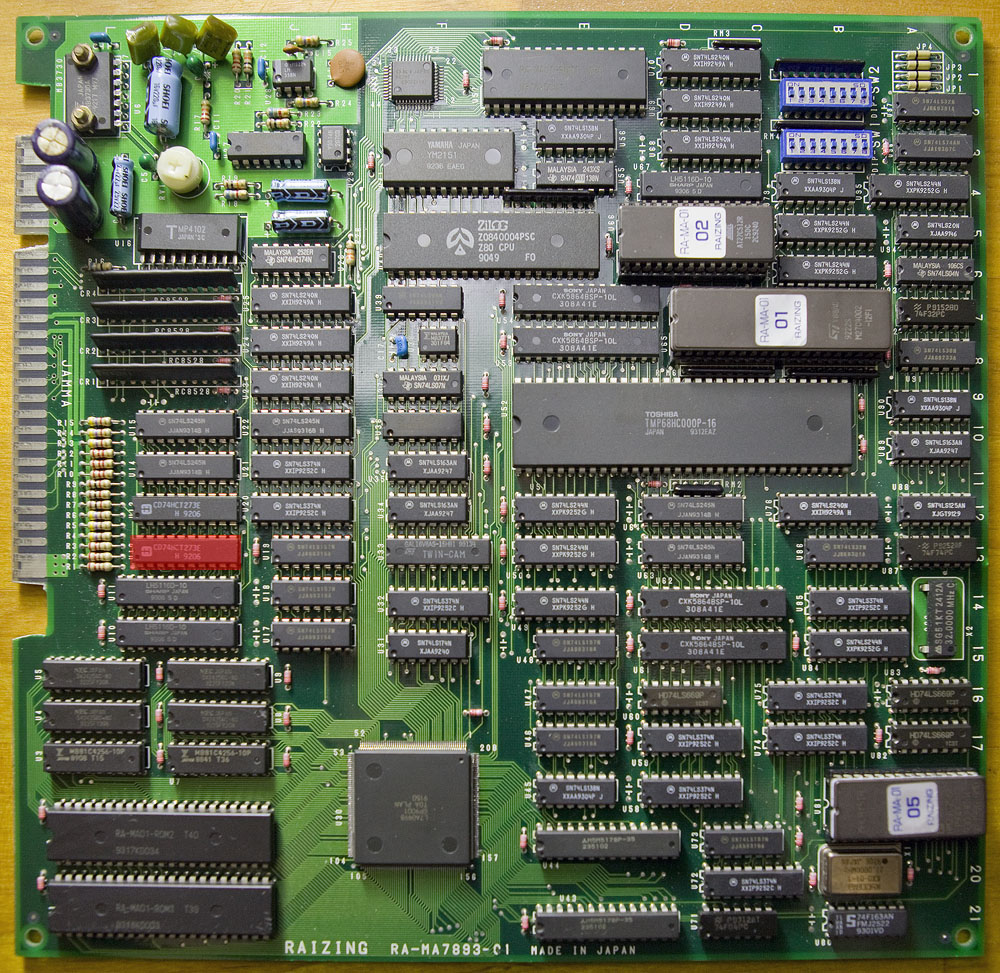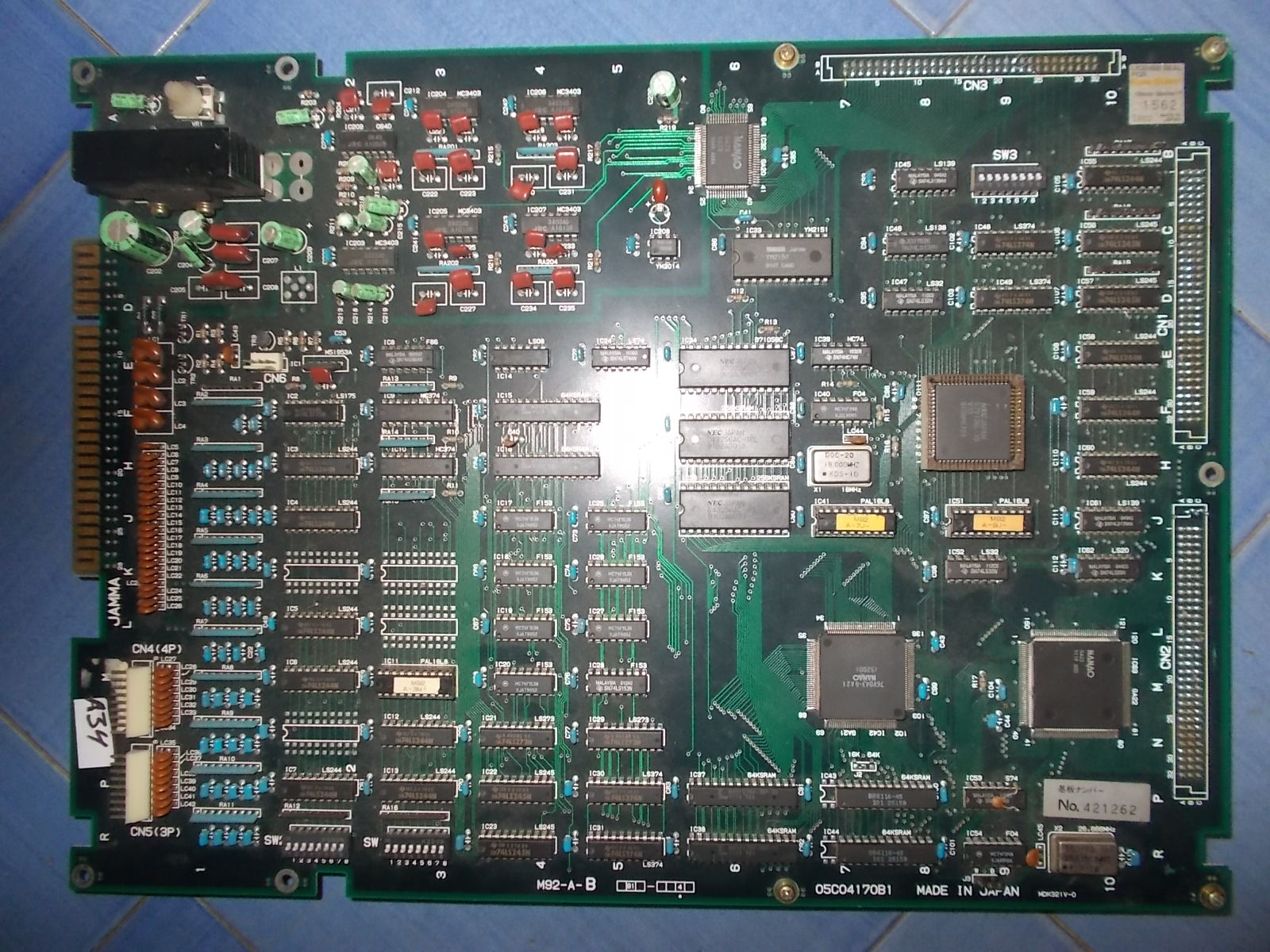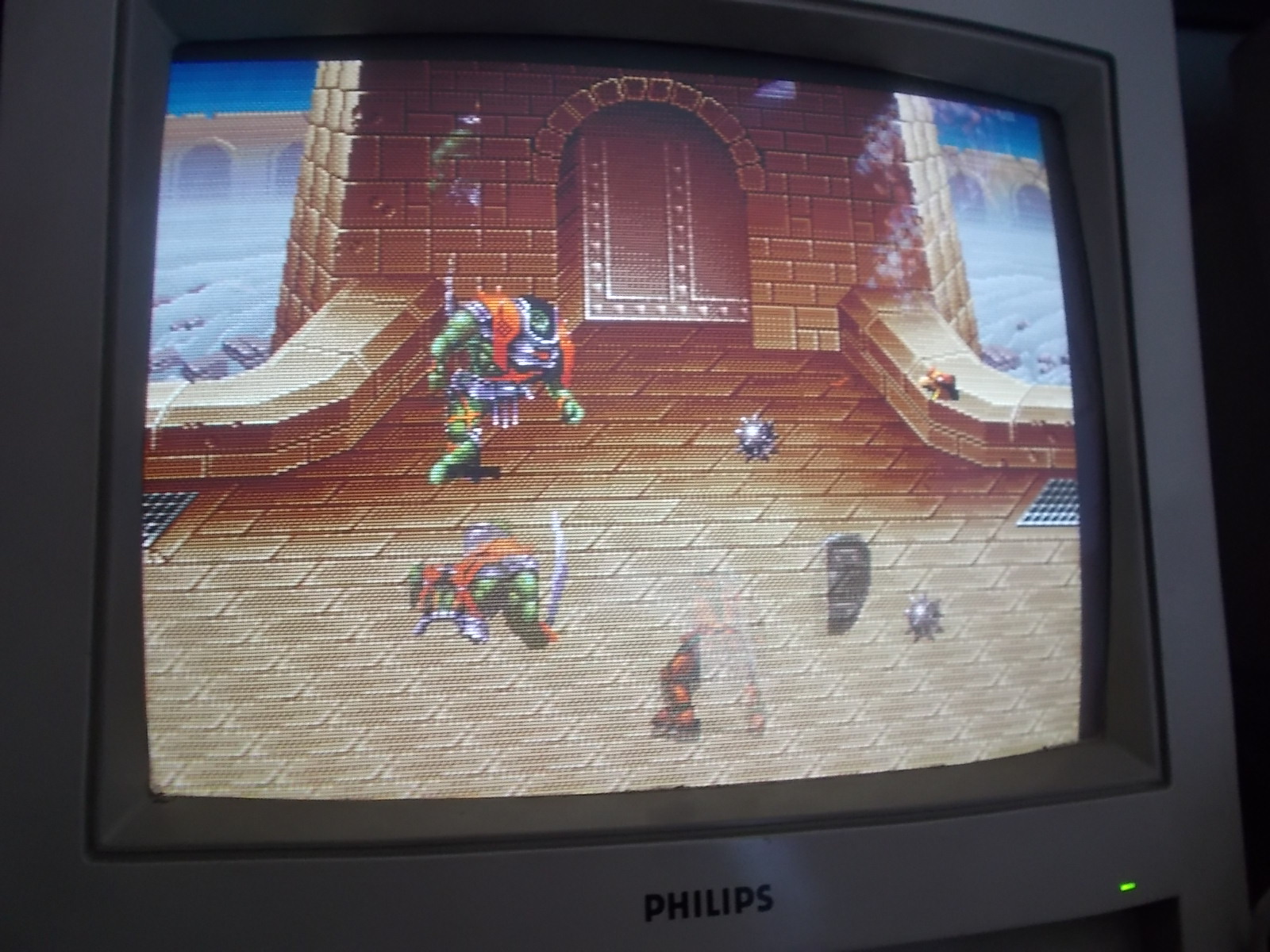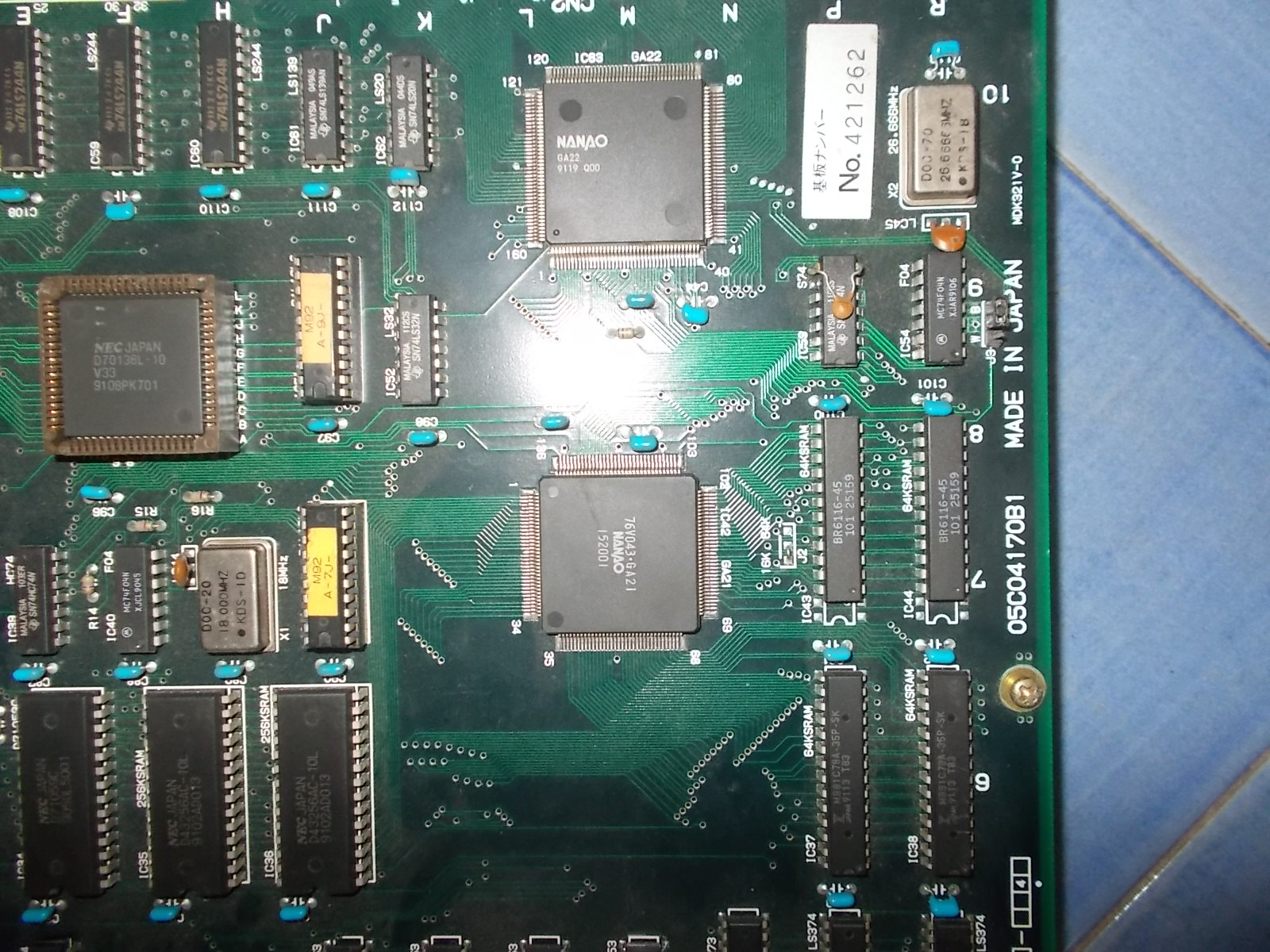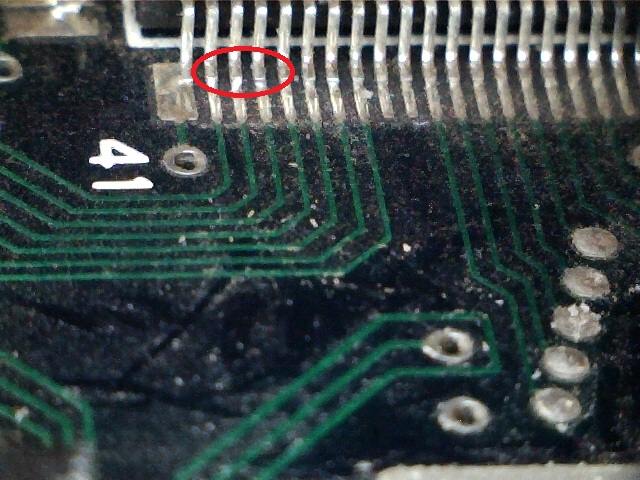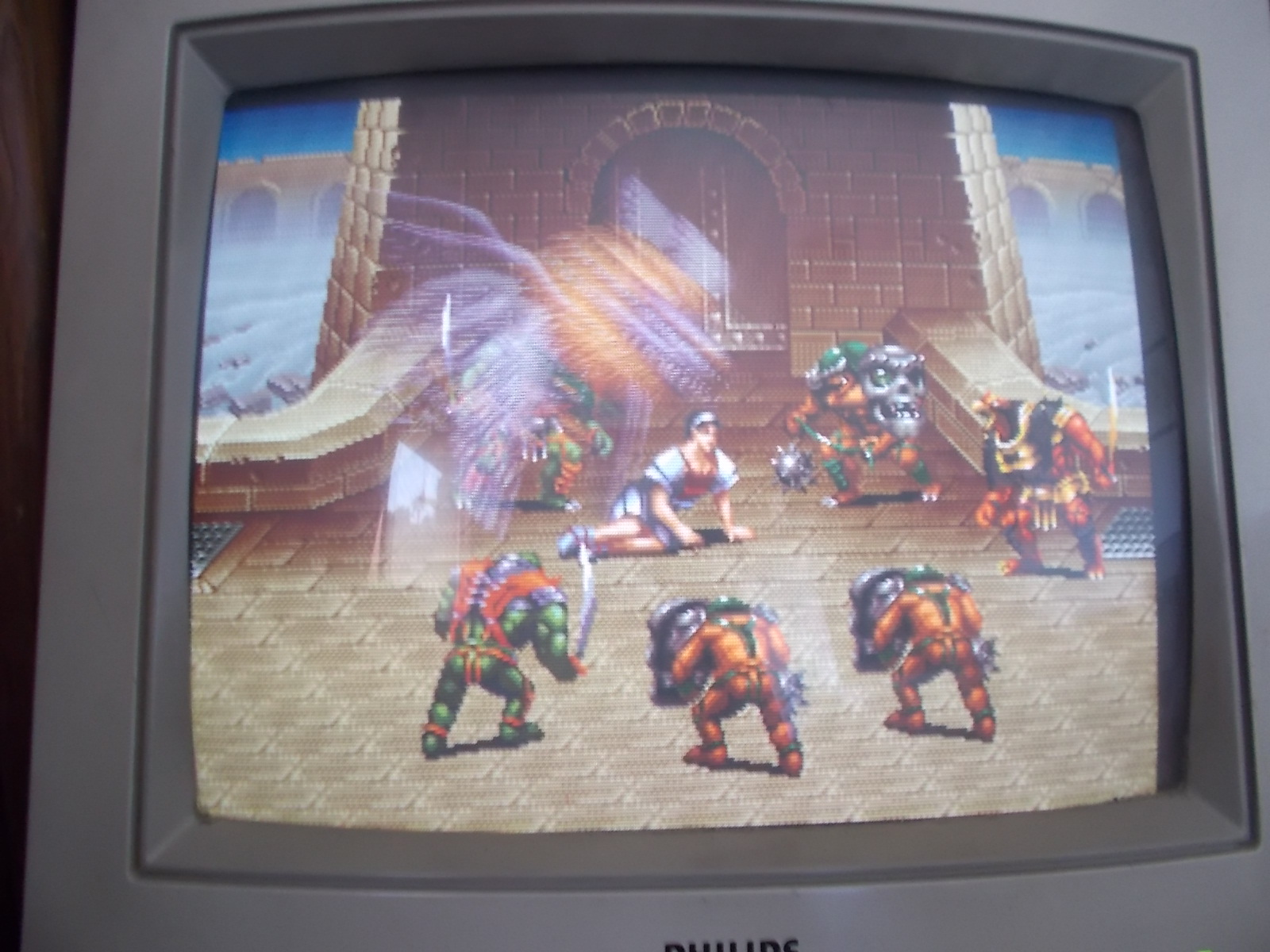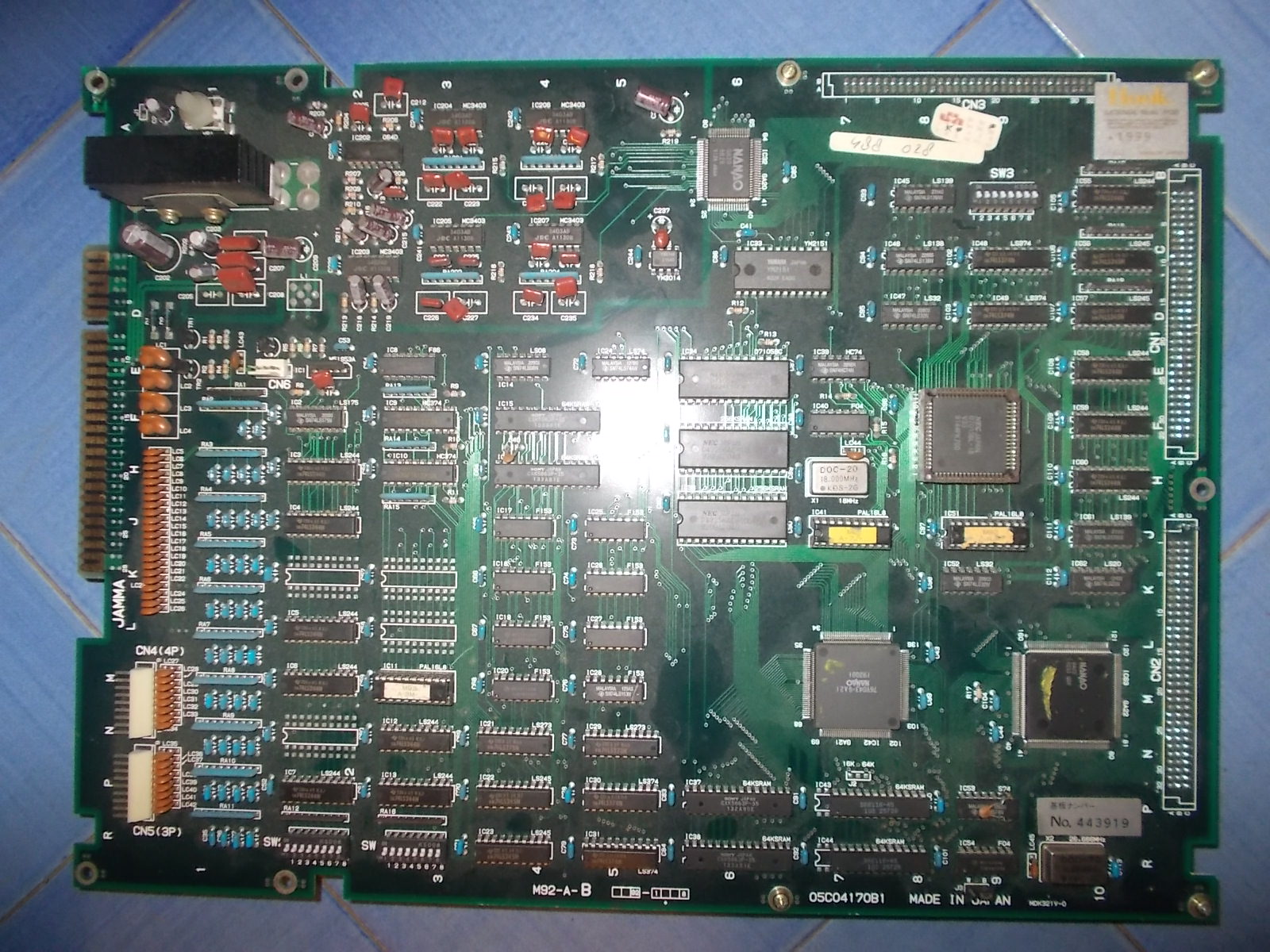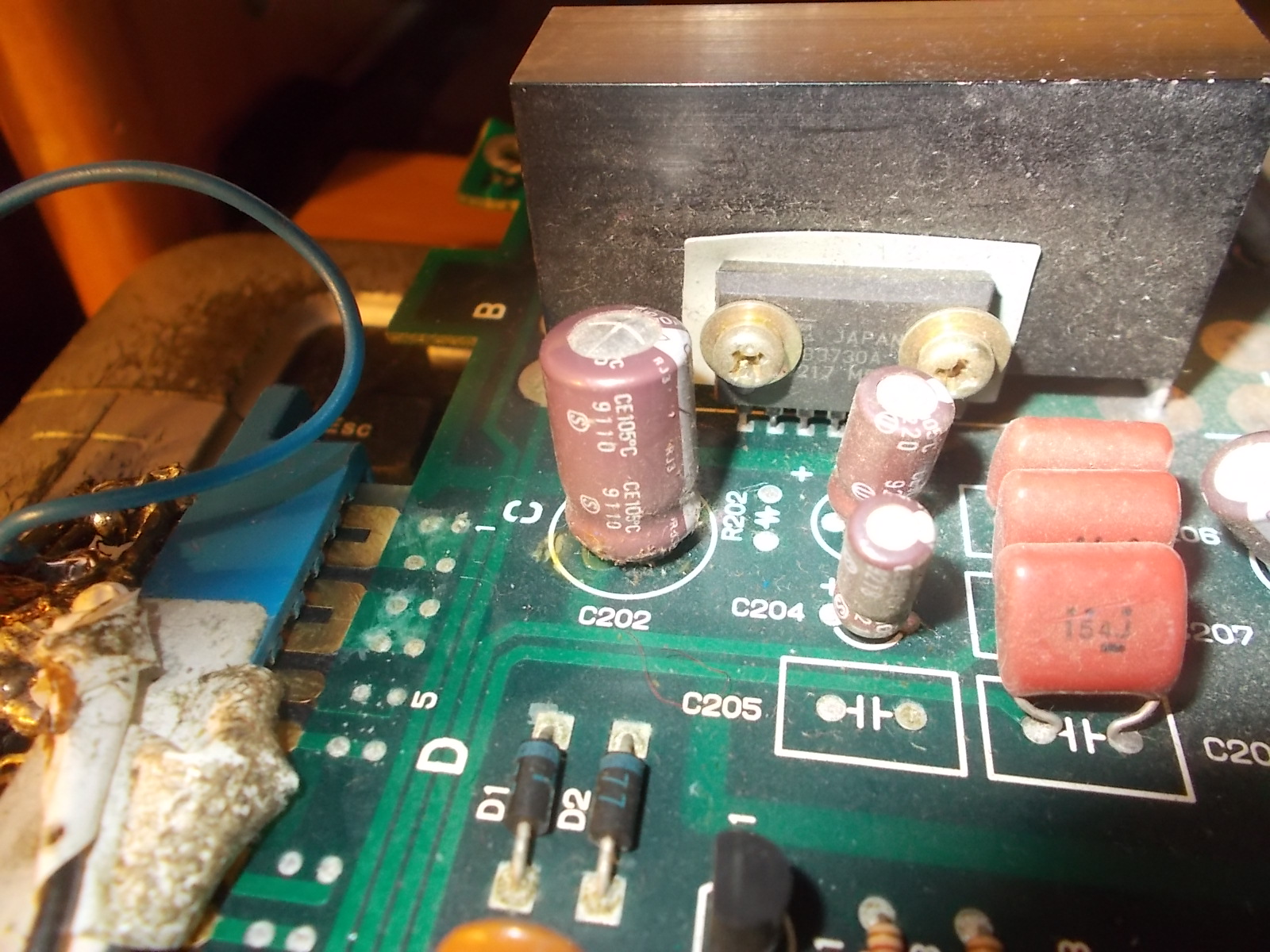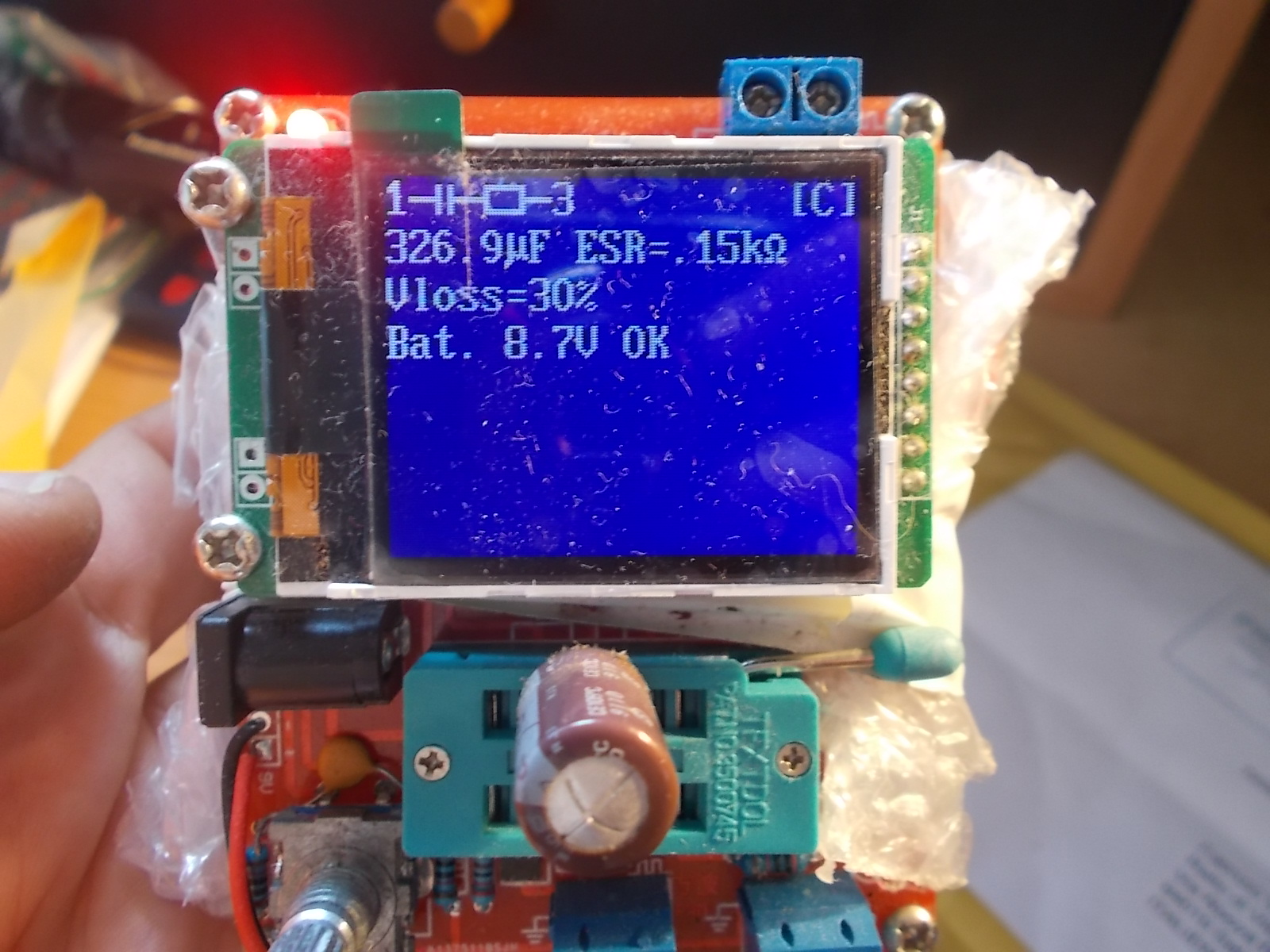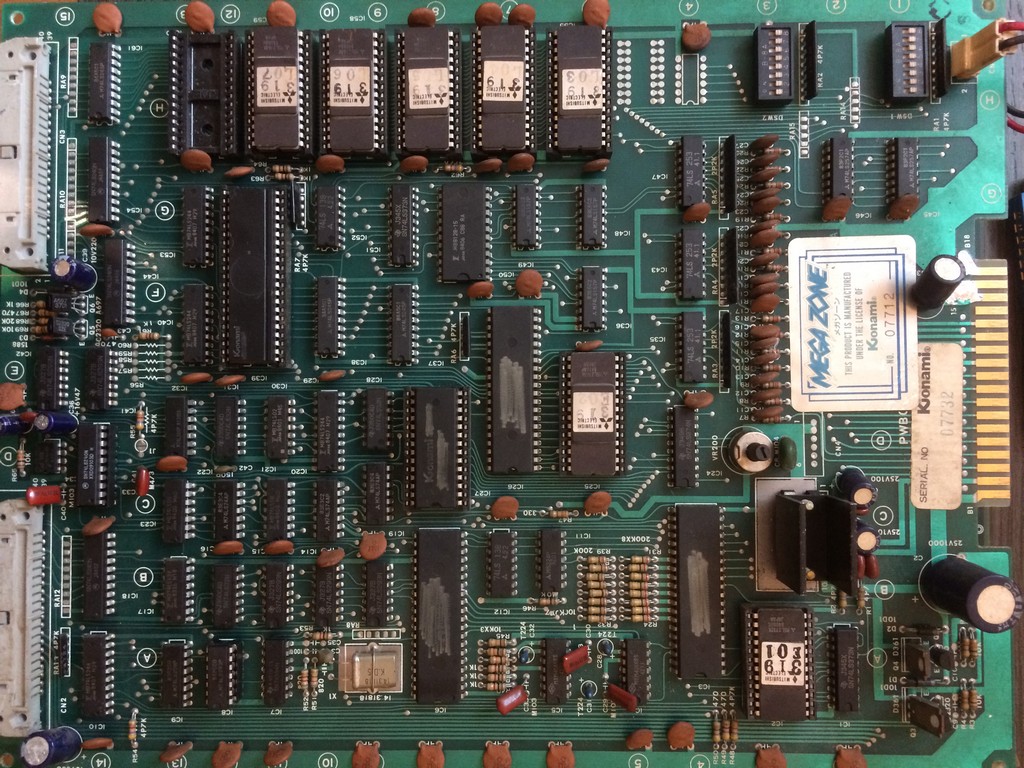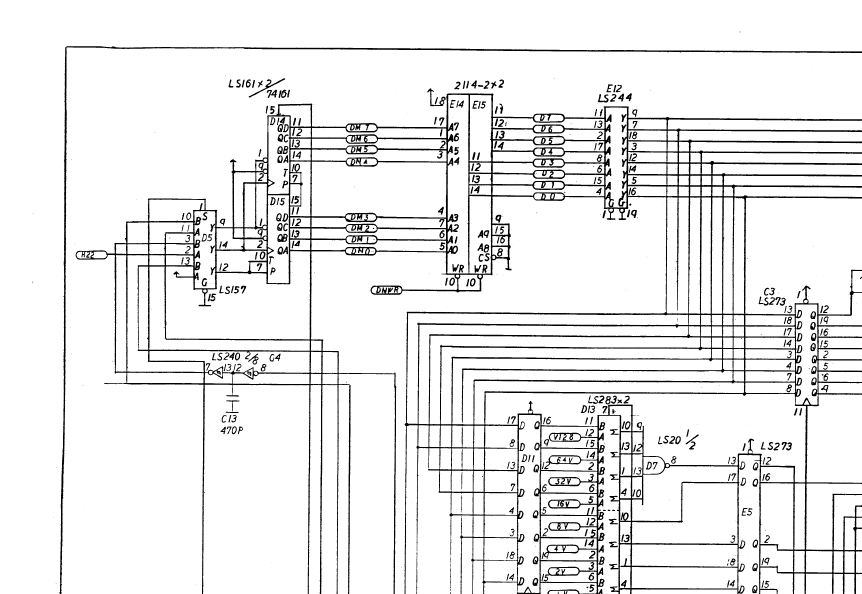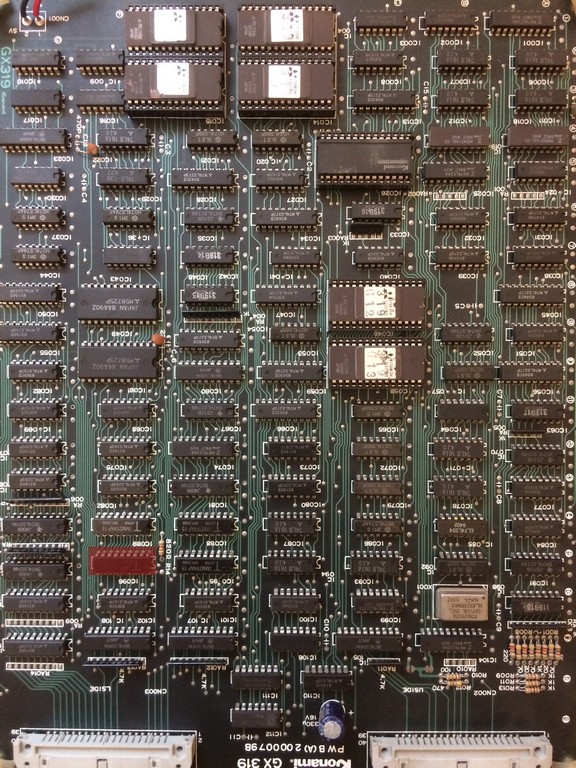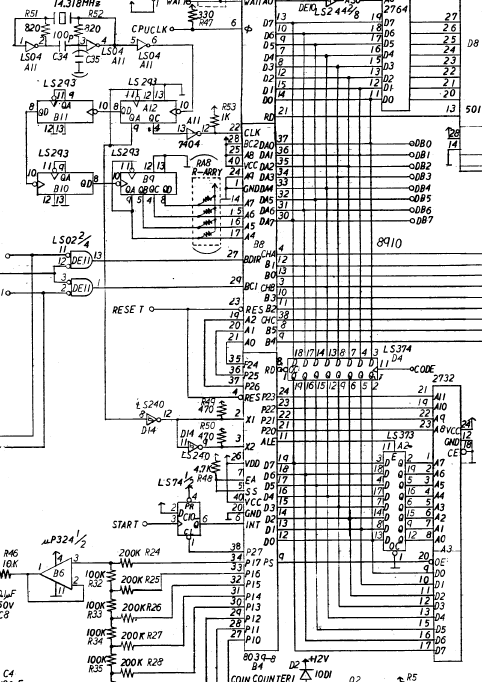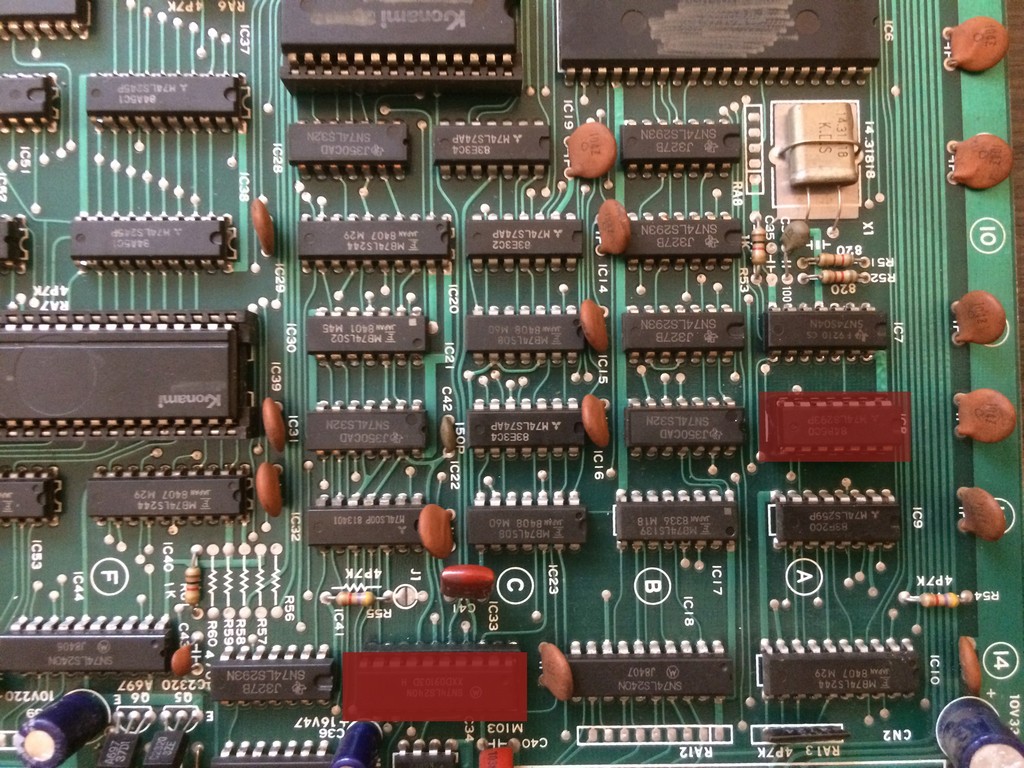This fantastic monitor has been on my test bench for as long as i’ve been in this hobby and its been a great little work horse.
I powered it up the other day to test something and noticed the upper half of the screen had what I would describe as thick scanlines whereas to lower half of the screen looked a little compressed.
I hooked up my NES to it and the problem was a lot more apparent
Keep you eye on Luigi when he jumps to the top of the screen. As he moves up he gets longer
Asking a couple of people quickly, they all recommended changing the capacitors. The ‘shotgun’ approach isn’t really something I like doing as I like to understand what would cause issues before I randomly poke around but monitors are not my strong point so I started ESR testing in-circuit.
All the capacitors I checked were perfect with really low ESR values and all the capacitance readings were within spec. All except for one little capacitor, C306. This is a 47uF 25v capacitor and is connected to pin 12 of the vertical deflection circuit (TDA1670A)
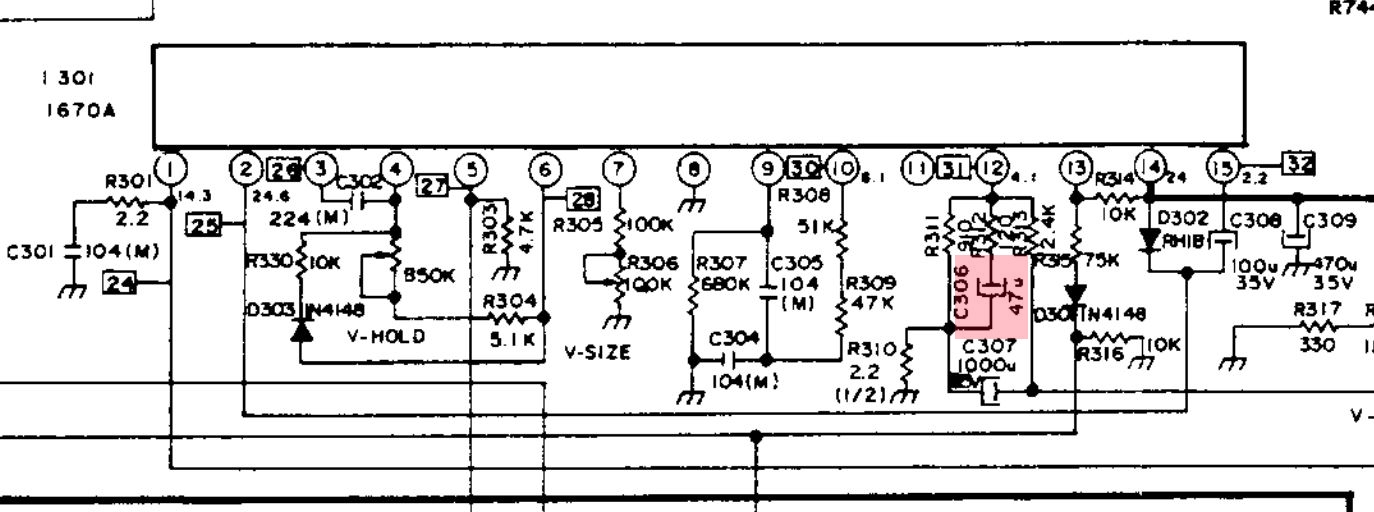

I tested the capacitor out of circuit and confirmed for sure it was actually bad.

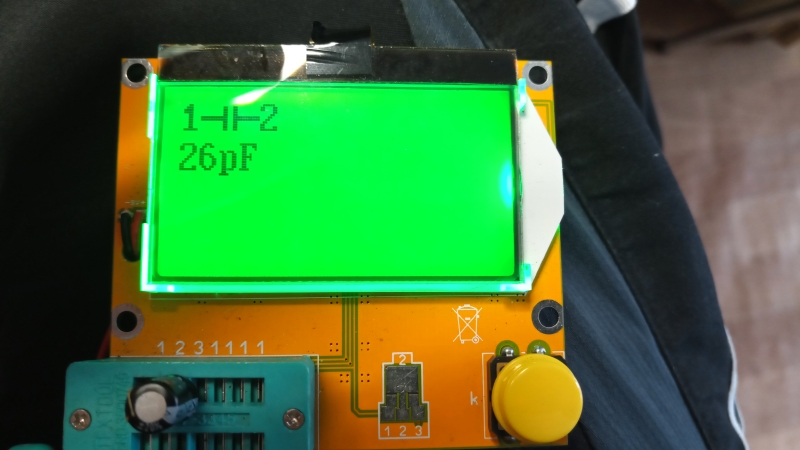
With the monitor taken apart I hooked up the Muter BMR95 to the tube to check the condition of the guns
A tube can usually be identified by the label that is on the back of the tube
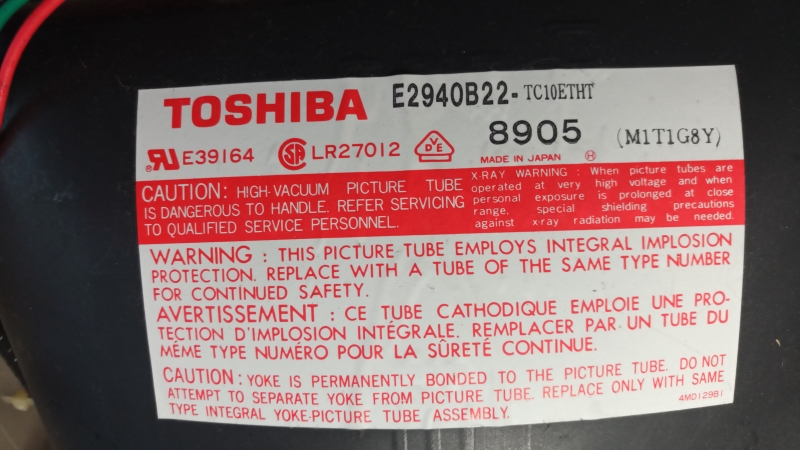
E2940B22 is the one we want. Next we cross reference this to the supplied manual to find which adapter we need to use.
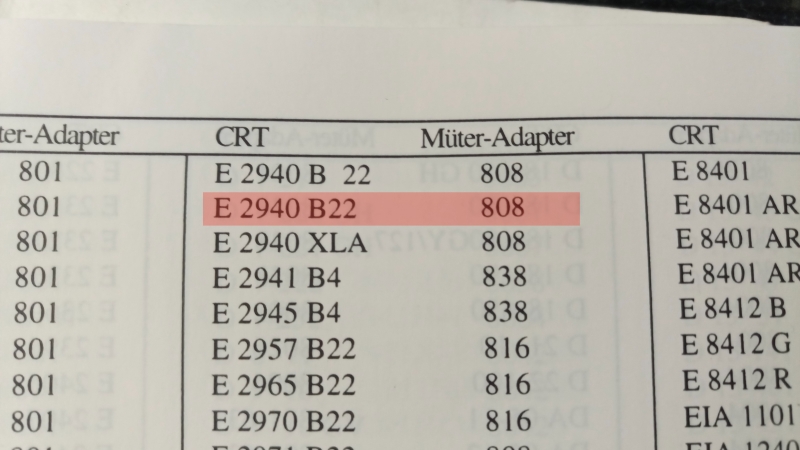
Adapter 808 is the one we need for this tube.
All hooked up
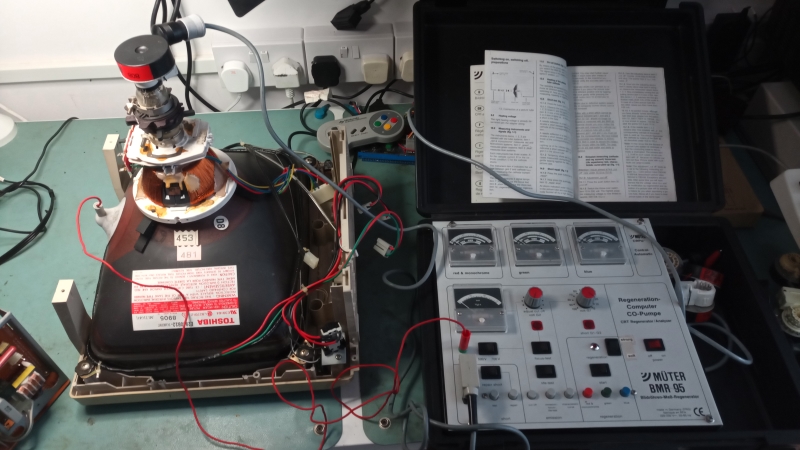

The guns aren’t too bad and certainly no need to attempt any cleaning or rejuvenating. Sometimes this can cause more harm than good. I have a spreadsheet prepared too as outlined in the BMR 95 manual to give a better indication of the life expectancy of a tube but i’ve not included it here.
With all that done it was time to test the monitor again
All seems to be fixed again and im happy with that.
You can see the stretching better with a picture comparisson
Never underestimate the importance of a single capacitor!


